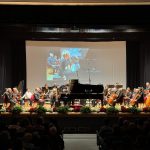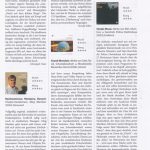INTERNATIONAL PIANO QUATERLY
Spring 1999
SAUER
Etudes de concert Nos. 21-30. Boîte à Musique. Couplet sans Paroles. Les Délices de Vienne. Echo de Vienne. Le Retour. Scherzo Valse.
OLEG MARSHEV — pf / Danacord DACOCD 488 / 72′ / DDD
Hard on the heels of Vol.1 (DACOCD 487 W/99) comes the second disc of Marshev’s enterprising survey of the piano music of Emil von Sauer, containing the remaining Etudes de concert and a selection of Waltzes for good measure. More so than in the first volume, the studies on this disc tend towards a finger-crunching toccata style (whether Mendelssohnian or Ravelian in character) rather than Chopinesque poetry, although there are notable exceptions (No. 26, “Preghiera”, for example, or the extended No. 28, “Waldandacht”, for the left hand alone). The nostalgic Viennese charm of the earlier waltzes offers a happy and delicious contrast, evoking a bygone era much as Godowsky and Ignaz Friedman were later to do.
The apparent ease with which Oleg Marshev encompasses such a range of demanding piano writing is impressive, especially when, as here, there is no significant performance tradition to speak of and therefore limited inherited parameters of interpretation. True, these works don’t require deep insights or a special spiritual affinity, they do, however, require tremendous clarity and dexterity and an insouciant grace and charm, and in this Marshev is largely successful. He tackles works such as the “Etude chromatique” (No. 21) shimmers with menacing agitation and the “Staccato Etude” (No. 29) reveals wrists of steel.
In some of the more lyrical pieces, however, I miss the delicacy and tonal beauty found in Sauer’s own recordings. In “Preghiera” for example, after a beautifully moulded pianissimo opening, Marshev’s tone hardens palpably at louder dynamics: something of Sauer’s fragrant sound world and sensuous tonal palette – or, if you like, a stronger erotic charge – would be more seductive. In the waltzes, too, Marshev’s playing is most attractive at softer dynamic levels. But this is not a major quibble: if anything, this disc is more varied and attractive than it’s predecessor. Indeed, try Marshev’s delightfully evocative music box (track 15) and you’ll hear exquisitely graded and superbly cristalline passagework, surely accompanying the most elegant and pristine ballerina.
The recordings are quite close, which may accentuate the hardness of tone at forte level, and Farhan Malik’s accompanying notes are illuminating and supply a broader context for the music. Volume 3 of this enjoyable survey, containing Sauer’s two piano sonatas, should follow soon and given the success of the first two discs I am looking forward to it impatiently.


